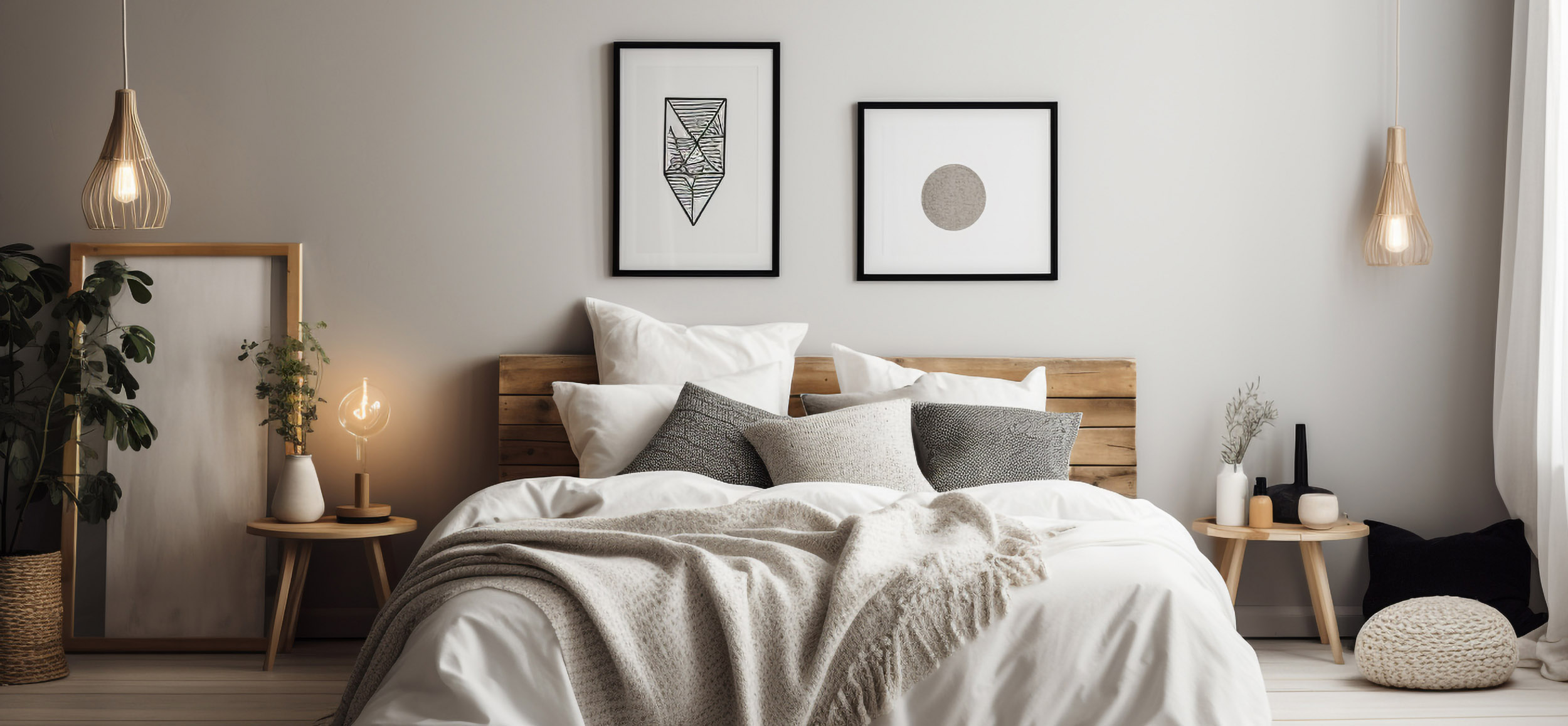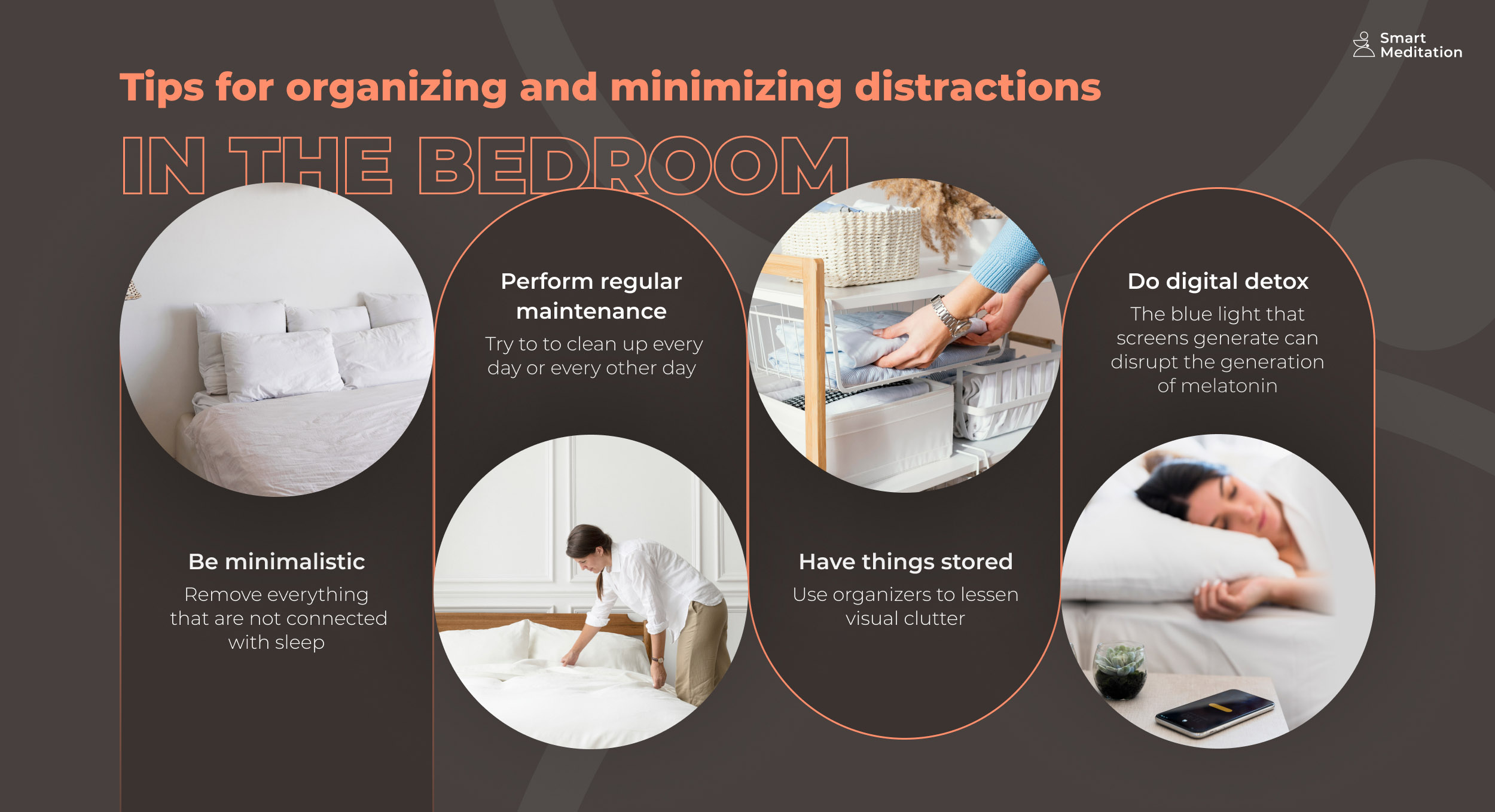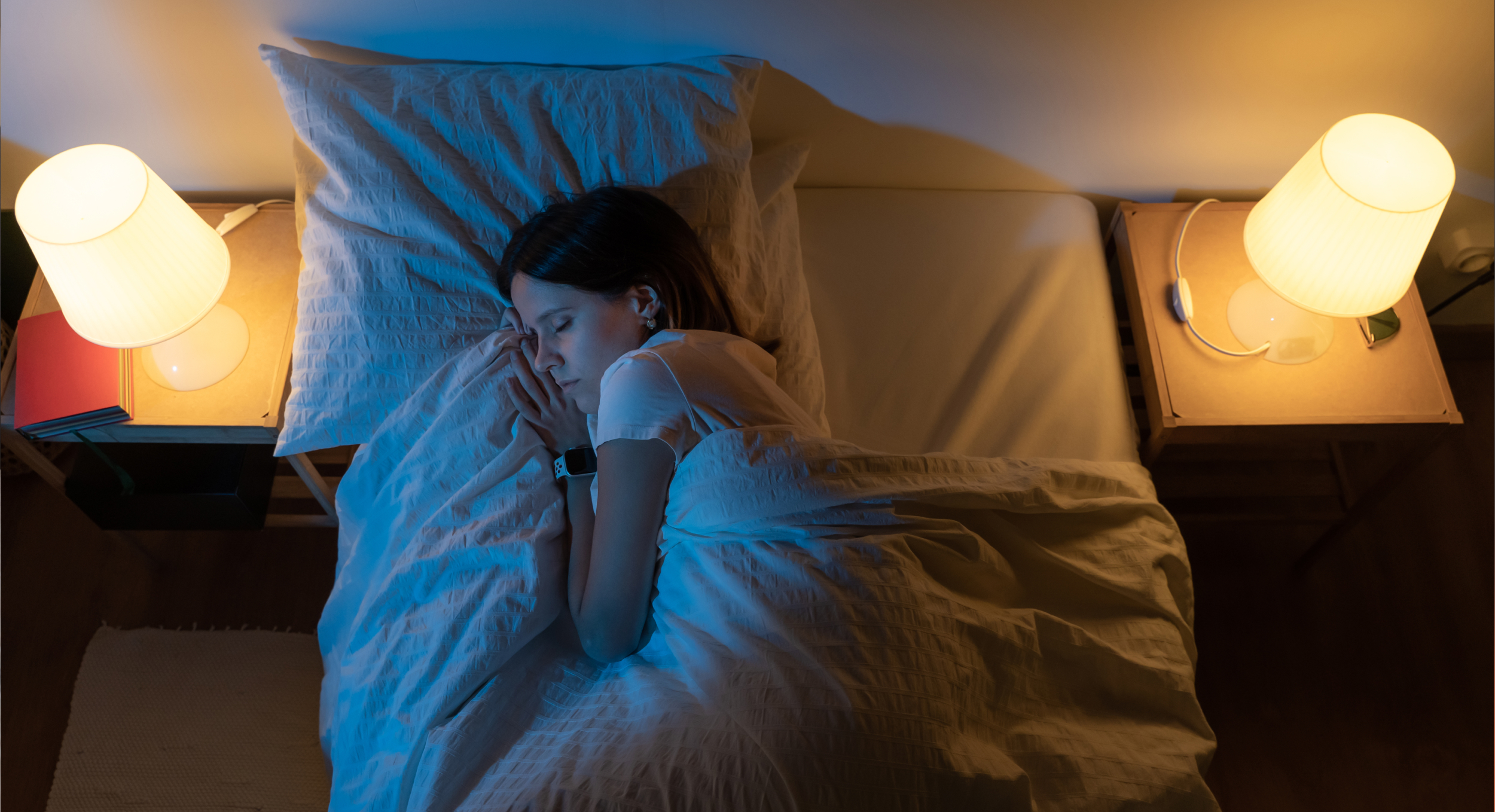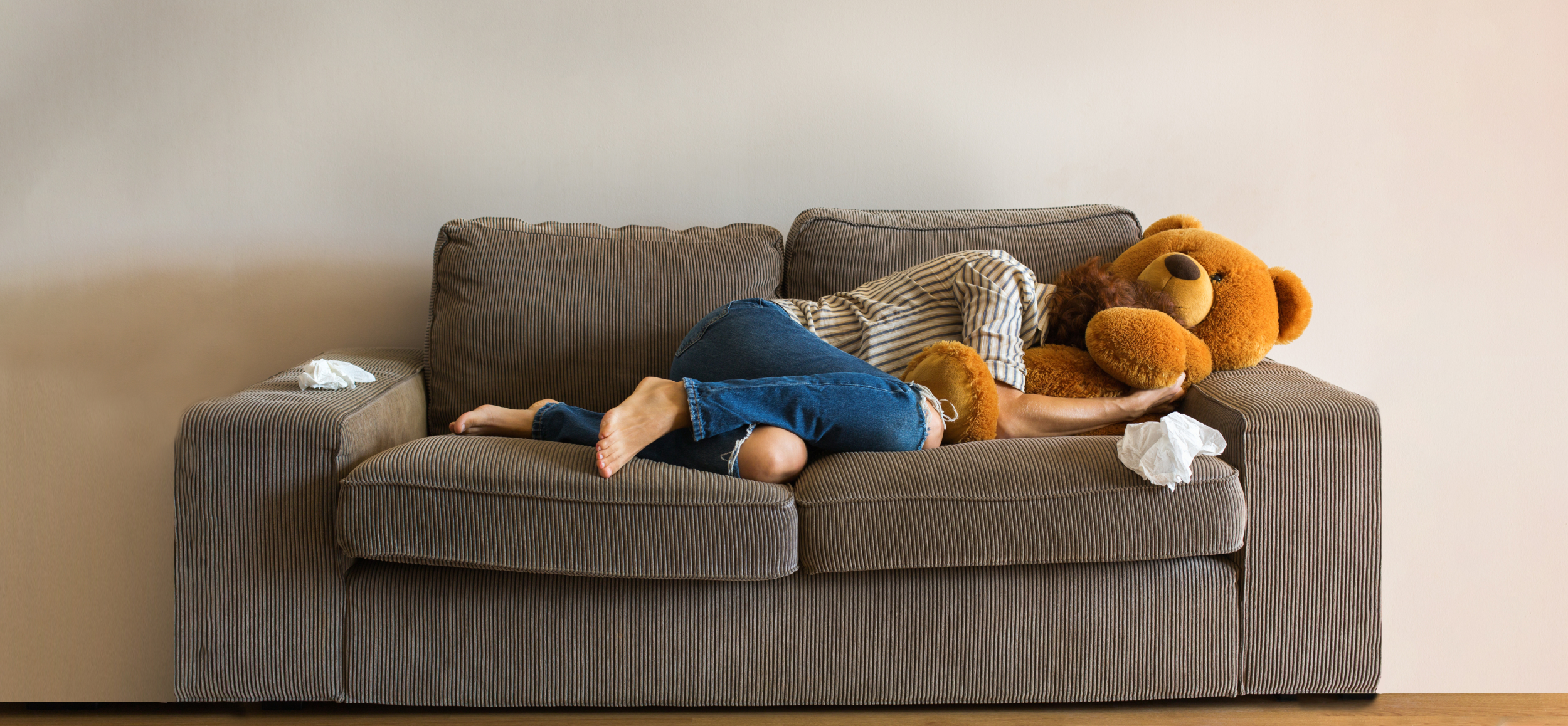
The Foundation of Serenity: Creating an Ideal Sleep Environment
The quality of our sleep is often directly linked to how well set up our bedroom is. And if you’re the kind of person who struggles with keeping their lair cozy and uncluttered, this article is for you.
We’re going to take a look at how to choose the best sleep conditions, how to organize your sleeping area properly, as well as how to make it more comfy with the right temperature and meditation music supplementing it.

Choosing the Right Bedroom Location
Whenever you buy or rent a new apartment, or rearrange your existing multi-bedroom house, make sure to have your slumber spot at the best possible place.
Factors to consider when selecting the ideal bedroom location
For ideal sleeping conditions it’s important to determine any possible sources of noise in your house and try to keep your bedroom away from busy places like stairs, corridors, common rooms and the kitchen. Naturally, you want your bedroom to be removed from the action so that you may retire to a peaceful area when it’s time to sleep.
Just like inside noise, outside noise is also an important factor. It’s preferable that the bedroom doesn’t face any busy areas such as highways, railroad tracks or busy pedestrian streets. Moreover, make sure that the natural lighting of your bedroom is conducive to the pleasant atmosphere – a lot of people prefer to have their windows facing east as they get to meet the sunrise. However, if you’re a night owl, you may opt for the opposite solution.
Minimizing noise and disturbances for better sleep
Soundproofing is very important for bedrooms – seal any holes around windows and doors with weatherstripping to prevent noise from entering from the outside. To take it a step further, you can also place draught stoppers at the base of the doors. Finally, you can even employ devices or software that consistently emit a soothing background noise. By establishing a dependable, sleep-friendly auditory environment, white noise can cover out disturbing sounds.
Utilizing curtains and blinds to control natural light
It’s also a good idea to pick sound-absorbing drapes made of thick, hefty materials. The material’s density aids in forming a barrier against outside light; on top of that, most double-layered curtains have the ability to effectively block sound as well. Additionally, to stop light from leaking in from the sides, choose drapes that reach past the window frame and make sure they are fitted to the window’s measurements appropriately.
Optimal Room Temperature and Ventilation
An often overlooked element of our bedroom environment is temperature – many restless nights caused by extreme heat or cold can be avoided if the thermoregulation is done right.
The science behind room temperature and its effects on sleep
The optimal temperature for a sleep environment, according to science, is between 60 and 67 degrees Fahrenheit (15 and 19 degrees Celsius) – and therein lies a small issue. That’s because most houses and flats have their room temperature slightly higher, around 70-80 degrees Fahrenheit (20-24 degrees Celsius), which isn’t perfect.
The cooler, more suitable range corresponds to the body’s normal decrease in core temperature during sleep, which is a physiological change that helps with sleep initiation and maintenance. This way, we help the body get to this sleep-inducing temperature, which promotes deeper, more unbroken sleep. On the other hand, overheated rooms can cause discomfort, nocturnal sweats, and sleep cycle abnormalities.
Importance of proper ventilation for fresh air circulation
Developing on the previous point, if you want to have a cooler area, your sleep environment must have adequate ventilation. And it’s not just about the temperature – the room’s air circulation keeps it from being stuffy, stale, or too humid, all of which can impair the quality of your sleep. By lowering the concentration of allergens, dust, and pollutants that might disrupt your respiratory system while you sleep, effective ventilation helps preserve indoor air quality.
Opening windows during the day to let in fresh air and deploying fans to promote air circulation are only a few ways you can make your bedroom have the best conditions for sleep. You can also use humidifiers or dehumidifiers to maintain a reasonable level of humidity, depending on your environment, preventing too dry or moist air that could disturb your sleep.
Decluttering and Organizing the Sleep Space
The physical organization of your bedroom often reflects the organization of your sleep. To make the most of your nights, you may want to rethink what ideal sleeping conditions for you are.
The impact of clutter on mental relaxation and sleep
Beyond only the physical aspects of your sleeping area, clutter has a big impact on how well you can unwind mentally and sleep. The tension, worry, and restlessness brought on by a busy environment can also be experienced in your mind. That usually happens because of how your attention gets diverted by the visual confusion of clutter, making it difficult for your mind to switch to the relaxed condition required for sleep.
A clean and organized environment, on the other hand, tells your mind that it’s time to relax and recharge. The most difficult thing, however, tends to be keeping the bedroom consistently well-organized – many people have tried decluttering at least once, but not many have managed to maintain that optimal state.
Tips for organizing and minimizing distractions in the bedroom
To solve the cluttering issue, you may want to adopt some of the following recommendations:
- Be Minimalistic: keep only what is absolutely required in your sleeping area. Remove everything that interferes with rest or sleep, such as excessive décor or things that are not connected with sleep, i.e. job or hobby-related objects.
- Perform Regular Maintenance: Set aside some time every day to clean up, if possible. If not, try to do it at least every other day as the more you procrastinate, the more difficult it will be to make yourself organize the bedroom.
- Have Things Stored: To keep things neatly tucked away, spend money on storage options like under-bed bins, shelving, or organizers. This makes your bedroom more tranquil and lessens visual clutter.
- Do Digital Detox: Keep electronic gadgets out of the bedroom or use a charging station that is out of reach to reduce digital distractions. The blue light that screens generate can disrupt the generation of melatonin.Soothing Colors and Lighting

Choosing calming and soothing color palettes for the bedroom
Earthy hues such as soft blues, subdued greens, soft grays, and muted pastels help to create a peaceful atmosphere. They promote calmness and relaxation, as opposed to bright, vivid colors that could arouse your senses. You can also experiment with relaxing color combinations – for instance, if you like sea shores, you may want to try a coastal atmosphere composed of soft blues and neutral colors.
Incorporating soft and dimmable lighting for bedtime relaxation
Opting for bedroom lights with dimmable settings is also a very good idea. You can use this tool to adjust the illumination – start with stronger lighting for reading or getting ready for bed, then gradually lower the brightness to create a relaxing atmosphere.
As for the color of the lighting, it’s recommended that you try bulbs with warm color temperatures, which range from 2700K to 3000K. This way, your body will know it’s time to get ready for sleep as this color resembles the sunset. You may also want to install blackout curtains or blinds that will allow you to block out natural light during the day.
Meditation Sleep Music
To finish the set up for your perfect bedroom, let’s talk about the choice of music. It may seem counterintuitive at first to use music for restful sleep, but the reality is that meditative tunes are great for proper rejuvenation.
The role of meditation music for better sleep
As we’ve already covered in our meditation sleep music guide, it adds to the ambiance of your bedroom and softly puts your mind at ease as you’re falling asleep. Its melodies, rhythms, and tones are purposefully crafted to sync with your brain waves that help you relax, which is great for getting a good night’s sleep. Moreover, sleep meditation music increases the quality of your sleep by helping you balance your REM and non-REM sleep cycles.
Exploring nature soundscapes and their sleep benefits
Some soundscapes utilize the ability of natural sounds to calm the mind and promote sleep, whether it’s the regular patter of raindrops, the rhythmic lapping of ocean waves, or the rustling of leaves in a forest. These sounds create a calming audio background and aid in masking outside noises and fostering a quiet environment. This is also backed by research – it has been claimed by many scholars that natural noises can lower stress hormone levels and make you fall asleep quicker.
Using smartphone apps for sleep sounds
You can also leverage modern technology with the help of special meditation apps that will help you create the best sleep environment. Look for applications that let you create your own custom sound combinations so you’ll benefit from the very unique audio experience that works best for you. Another crucial feature is the ability to select a timer for the sounds to play for before fading off gradually. Lastly, binaural beats, which use particular sound frequencies to affect brainwave patterns linked to relaxation and sleep induction, are also a great feature to keep an eye on.
Conclusion
Creating the best sleep environment begins with the right location choice – away from the noisy streets and busy areas of the house, as well as away from too much lighting. If possible, make sure to set the temperature at around 60 and 67 degrees Fahrenheit (15 and 19 degrees Celsius) – it’s best for restful sleep. Also make consistent efforts in maintaining the cleanliness and the organization of your bedroom. And, finally, add a cherry on top – complement your bedroom ambiance with relaxing meditation music.






